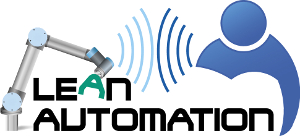LIAA Project to Assist Assembly Systems with Robotics
On September 2, 2013, the EU project titled “LIAA” was set in motion. With the project, scientists will help to develop robotic systems and applications that will be used for assembly in manufacturing, and in doing so help humans and robots to better work together.
 The project will bring European research institutes, component makers, technology providers and end users together so that a software framework for assembly systems can be developed. This system will divide responsibilities based on human and robotic strengths so that productivity can be increased, costs reduced, and workers relieved of dangerous or troublesome tasks.
The project will bring European research institutes, component makers, technology providers and end users together so that a software framework for assembly systems can be developed. This system will divide responsibilities based on human and robotic strengths so that productivity can be increased, costs reduced, and workers relieved of dangerous or troublesome tasks.
For instance, humans have the ability to think and use their minds, while robots have immense amounts of strength and can repeatedly do the same task again and again without tiring.
The LIAA project intends to use algorithms that will divide the assembly process into certain tasks and then dole them out to human workers or robots based on the specific task. The worker and robot will then be sent individual instructions on how to complete the job. For instance, a robot will be sent machine-readable commands and the human will receive multimedia-based instructions that can be seen with a tablet or another type of display.
In addition, the worker will be notified of what the robot is currently doing and the robot will be able to recognize what step the human is working on as well. Due to this, the robot will be able to adjust what it is doing so that it can assist with the process in case the human is behind and causing a delay.
The project also aims to be a cost effective solution. One way that this is being accomplished is through the usage of low-cost components.
“LIAA aims at developing a framework that allows for the cost-effective use of robot assistants on the assembly shop floor, based on lightweight robots available on the market, low-cost sensors, and open-source robot control software,” says Martin Naumann, LIAA project coordinator and group manager in the Robot and Assistive Systems Department at Fraunhofer IPA.
One of the most important factors that people working on this project must consider is the safety of the human workers. This is being handled through automated risk assessments of the assembly system. It is performed at the design stage, while other measures are taken at the execution stage. If a risk is foreseen, a preventative measure will be taken to ensure that the human workers are safe on the job.










